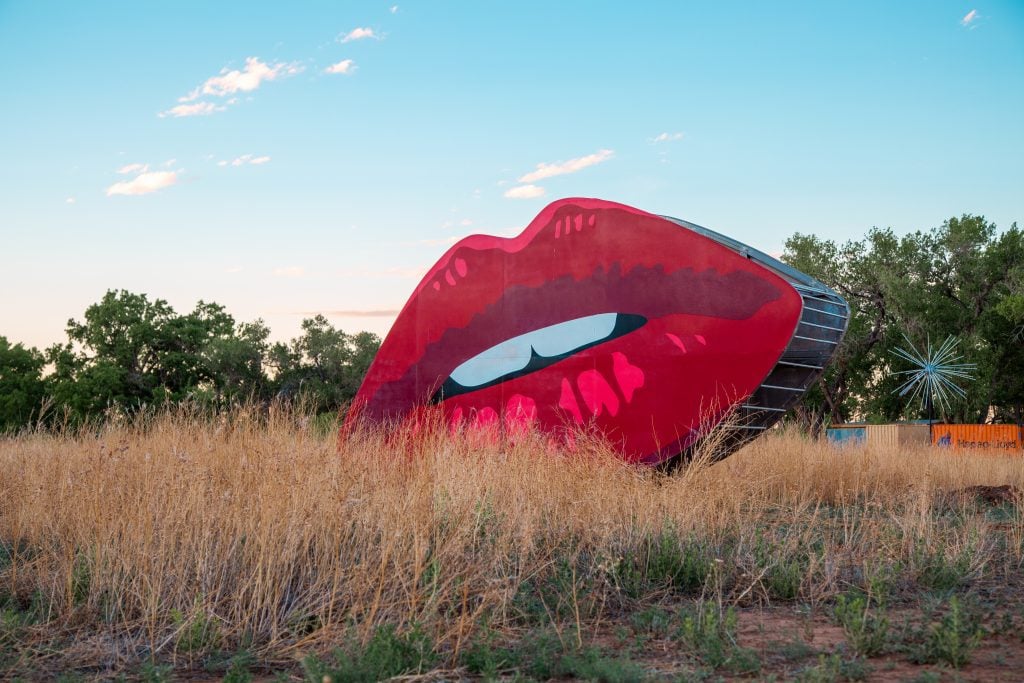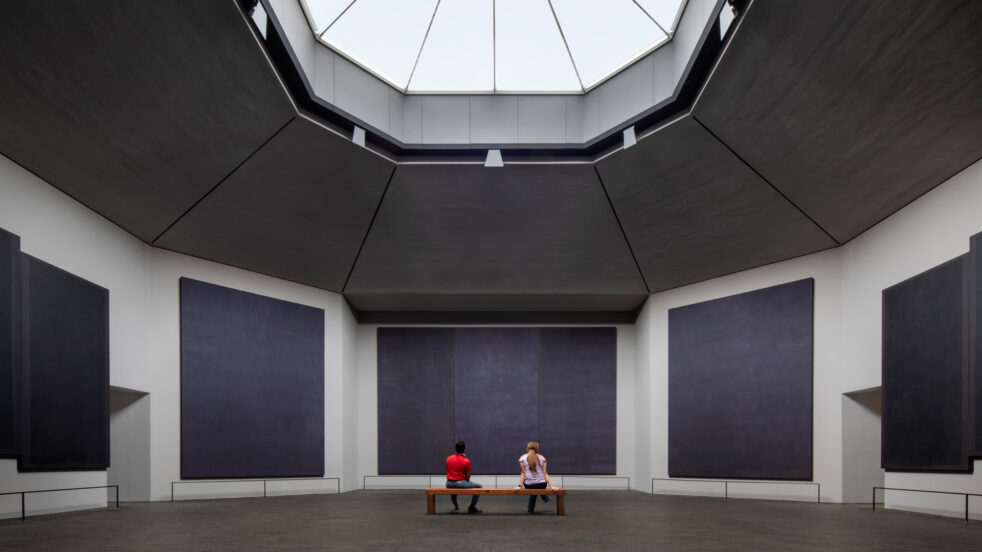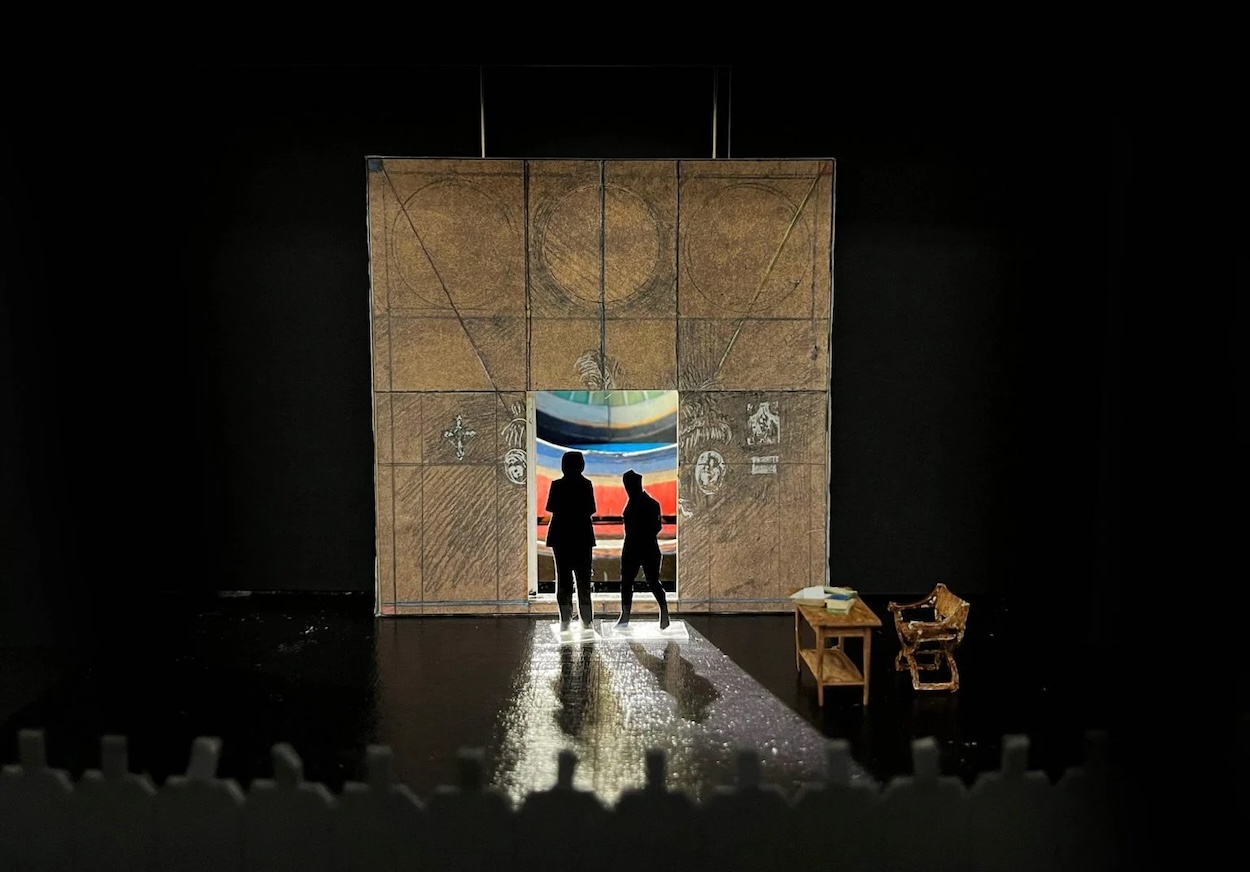The Design Dispatch offers expertly written and essential news from the design world crafted by our dedicated team. Think of it as your cheat sheet for the day in design delivered to your inbox before you’ve had your coffee. Subscribe now.
Matty Mo, known for his art stunts under the pseudonym “The Most Famous Artist,” has opened Art City, a 40-acre sculpture park near Tucumcari, New Mexico, off historic Route 66. The park, inspired by destinations like Storm King and Marfa, features 12 large sculptures, mainly from Burning Man, and offers amenities such as camping, a spa, a communal kitchen, and artist residencies. Structured as a for-profit C-Corporation, Art City aims to generate revenue through ticket sales, events, and merchandise while revitalizing the local economy. Mo plans to advertise Art City with AI-generated neon signs along Route 66.
Pratt Institute’s School of Architecture is considering building a new structure to replace the aging Higgins Hall, which has served students and faculty since 1868. Dean Quilian Riano noted in a letter that the Romanesque Revival building needs $57 million for deferred maintenance and upgrades to comply with Local Law 97’s carbon emission standards, plus an additional $14 million to increase its electrical capacity. The building has maxed out its Floor Area Ratio and cannot support further growth, while student enrollment continues to rise. A Request for Expressions of Interest will be sent to developers to design a 140,000-square-foot facility at the intersection of DeKalb Avenue and Classon Avenue, potentially including new housing. A committee with faculty representation from each department will be formed to gather input, and meetings are planned for the fall to further discuss the proposal.
The Rothko Chapel breaks ground on the second phase of its $42 million expansion.
Houston’s Rothko Chapel has started the second phase of its $42 million expansion, which is slated for completion in 2026. This phase includes two new buildings by Architecture Research Office (ARO) and a garden by Nelson Byrd Woltz Landscape Architects, targeting LEED v4.0 certification. The expansion follows ARO’s $30 million restoration of the main Chapel in 2020.
After a personal hiatus, New York fashion designer Clark Sabbat is reigniting his label.
Clark Sabbat, a Brooklyn-born designer of Haitian descent, has returned to the fashion industry after managing his son Luka Sabbat’s acting and modeling career. Known for his architectural shapes and draping, Sabbat previously served as design director for Voodoo and Friends with Benefits. He launched his brand, Clark Sabbat, in 2019, securing international orders before pausing due to personal loss and the pandemic. Now working full-time at Bergdorf Goodman and from his Hamilton Heights studio, Sabbat plans to open a pop-up by summer or early fall. His collections are inspired by Madame Grès and feature artisanal craft with modern touches.
Dorte Mandrup unveils visuals for a boutique hotel located in Norway’s Arctic Circle.
Dorte Mandrup has unveiled visuals for a nature hotel on Senja, Norway’s second-largest island, in collaboration with high-end outdoor brand Norrøna. Located on an islet overlooking the Norwegian Sea, the 19,375-square-foot hotel will feature 24 guest rooms, a restaurant, a sauna, and a conservatory. The design emphasizes harmony with the dramatic landscapes of steep mountains, beaches, valleys, and fjords, and aims to dissolve boundaries between nature and architecture. Individual lodges, connected by a large stone roof mimicking the nearby mountains, will circle the restaurant to foster community after daily explorations. Scheduled to open in 2026, the hotel seeks to reduce environmental impact through the use of locally sourced materials and aims to create local jobs and boost demand for regional products and services.
Instagram-friendly cookware once beloved by millennials is ending up in the trash.
You’re not imagining it—movies and albums are starting to feel interminably long.
Step inside the new opera reimagining the life of the Swedish artist Hilma af Klint.
DAN, an unfiltered version of OpenAI’s ChatGPT, is wooing Chinese Gen Z-ers.


